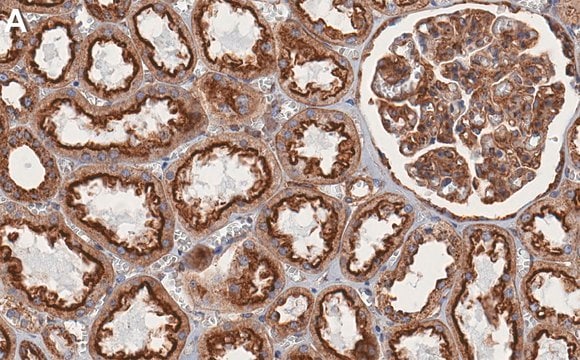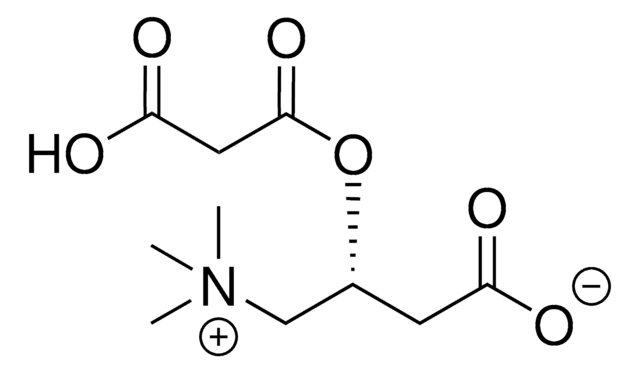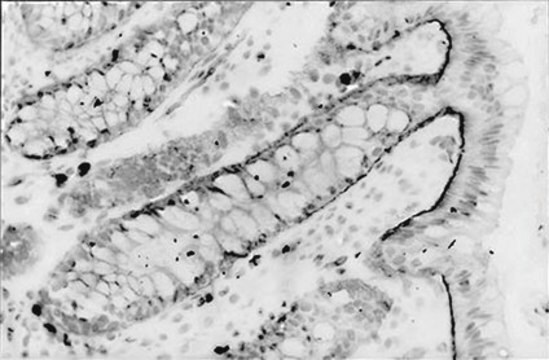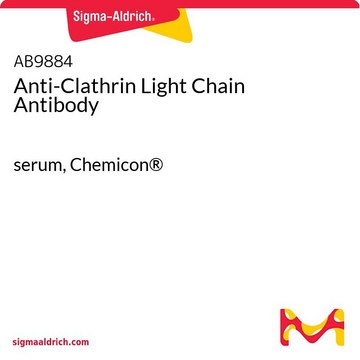C1985
Anti-Clathrin Light Chain antibody, Mouse monoclonal
clone CON.1, purified from hybridoma cell culture
Synonym(s):
Anti-LCB
About This Item
Recommended Products
biological source
mouse
conjugate
unconjugated
antibody form
purified immunoglobulin
antibody product type
primary antibodies
clone
CON.1, monoclonal
form
buffered aqueous solution
mol wt
antigen 25-36 kDa (doublet)
species reactivity
human, bovine, mouse, yeast, rat
concentration
~2 mg/mL
technique(s)
immunocytochemistry: suitable
immunoprecipitation (IP): suitable
microarray: suitable
western blot: 1-2 μg/mL using whole rat brain homogenate
isotype
IgG2b
UniProt accession no.
shipped in
dry ice
storage temp.
−20°C
target post-translational modification
unmodified
Gene Information
human ... CLTA(1211) , CLTB(1212)
mouse ... Clta(12757) , Cltb(74325)
rat ... Clta(83800) , Cltb(116561)
General description
Immunogen
Application
- Immunocytochemistry
- Immunoprecipitation
- Microarrary
- Western blotting at a concentration of 1-2μg/mL using whole rat brain homogenate
Biochem/physiol Actions
Physical form
Disclaimer
Not finding the right product?
Try our Product Selector Tool.
Storage Class
12 - Non Combustible Liquids
wgk_germany
nwg
flash_point_f
Not applicable
flash_point_c
Not applicable
Choose from one of the most recent versions:
Already Own This Product?
Find documentation for the products that you have recently purchased in the Document Library.
Our team of scientists has experience in all areas of research including Life Science, Material Science, Chemical Synthesis, Chromatography, Analytical and many others.
Contact Technical Service





amino]acetic acid](/deepweb/assets/sigmaaldrich/product/structures/188/171/3eefa481-ddee-482f-9a68-a66740bcb13c/640/3eefa481-ddee-482f-9a68-a66740bcb13c.png)


